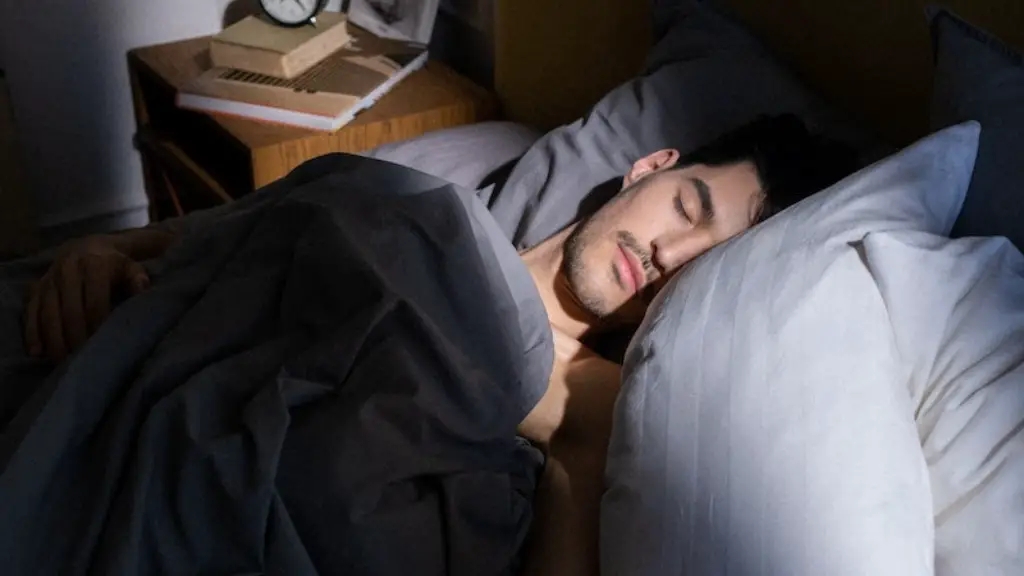There is no one answer to this question as fever dreams can be caused by a variety of things. For example, a person may have a fever due to an infection or illness, which can cause them to have strange and vivid dreams. Additionally, certain medications can also cause people to have fever dreams. Finally, some people may simply be more susceptible to experiencing fever dreams due to their genetics or mental state.
The most likely explanation for fever dreams is that they’re caused by the same thing that causes nightmares: the sympathetic nervous system. This system is responsible for the fight-or-flight response, and it’s constantly on the lookout for danger. When it’s overstimulated, as it is during a fever, it can cause terrifying dreams.
What are fever dreams a symptom of?
There is no one definitive answer to this question. Scientists have several theories about why fever dreams might occur, but no definitive consensus. One theory is that high temperatures might disrupt the brain’s normal cognitive processes. This can lead to more bizarre and disconnected dreams.
Fever dreams are intense and bizarre because of the high body temperature. The fever affects the cognitive processing of our brain during sleep, causing it to produce dreams which are unpleasant and unusual.
What are examples of fever dreams
Fever dreams are a type of vivid dream that can be brought on by a fever or other illness. These dreams can be very intense and often feel very real. They may be frightening or disturbing, and can sometimes be hard to distinguish from reality.
If you or your child has a fever, it’s important to stay hydrated and cool. Drink lots of fluids and take acetaminophen or ibuprofen to help reduce the fever. You can also take tepid baths or use cool compresses to help lower the temperature. If symptoms don’t improve after a few days or if the fever is very high, it’s important to see a doctor.
Why do you get weird dreams when sick?
Elevated brain temperatures can disrupt the brain’s normal cognitive processes, which can lead to unusual and unpleasant dreams. This is because the brain is not functioning well during high fever. If you experience elevated brain temperatures, it is best to seek medical attention so that you can be treated and your cognitive function can return to normal.
There is no specific meaning to fever dreams, but they can often be connected to a person’s current situation. For example, fever-related dreams more often include a health-related topic and sense of temperature than regular dreams. This may be because the person is currently ill, or because they are worried about their health.
How do you snap out of hallucinations?
If someone you know is experiencing a hallucination, here are some things you can do to help:
1. Suggest a walk or move to another room. Frightening hallucinations often subside in well-lit areas where other people are present.
2. Try to turn the person’s attention to music, conversation or activities you enjoy together.
3. Use distractions. This can help take the person’s mind off of the hallucinations.
4. If the hallucinations are particularly vivid or scary, remind the person that they are not real and that they are safe.
Cortisol is a hormone that is closely linked to your immune system function. Cortisol levels are higher during the day, and these higher levels suppress your immune activity to a large degree. When cortisol levels go down at night, your immune system is more active in fighting illness or infection. This is why fevers spike at night.
What causes mystery fevers
FUO is often caused by infections such as tuberculosis, mononucleosis, Lyme disease, cat scratch fever, and endocarditis. Inflammation from conditions such as lupus, rheumatoid arthritis, and inflammatory bowel disease can also lead to FUO.
Our work shows strong associations between increased nightmares in those reporting having had COVID-19. This suggests that the more that people were affected by COVID-19, the greater the impact upon dream activity and quality of life.
Does having Covid make your dreams weird?
The COVID-19 pandemic has had a significant effect on sleep and dream activity in healthy adults. Anxiety and stress associated with the pandemic have caused an increase in anxiety and panic-related conditions. Hence, it is natural that many people complain of altered sleep and nightmares.
Night terrors are a sleep disorder in which a person suddenly awakens from sleep in a terrified state. The cause is unknown but night terrors are often triggered by fever, lack of sleep or periods of emotional tension, stress or conflict.
How long does a fever dream last
Fever dreams often occur when someone has a fever, but they can also happen when someone is sick without a fever. In most cases, fever dreams are relatively short and don’t cause too much discomfort. However, everyone is different and some people may find that their fever dreams last longer than they should or are particularly distressing. If this is the case, it may be worth seeing a doctor to check whether there is any underlying medical cause.
Psychosis is a mental disorder characterized by abnormal thinking and perceptions. People with psychosis may experience hallucinations or delusions. Psychosis is not the same as psychopath, lack empathy – the capacity to understand how someone else feels, are manipulative, often have a total disregard for the consequences of their actions.
What is it called when you make up stories in your head and believing them?
Delusional disorder is a type of mental health condition in which a person can’t tell what’s real from what’s imagined. There are many types, including persecutory, jealous and grandiose types. It’s treatable with psychotherapy and medication.
Hallucinations are false or distorted sensory experiences that seem real to the person experiencing them. They can involve any of the senses, including sight, hearing, smell, taste, and touch. Hallucinations can be very frightening, and people who experience them may feel like they’re losing touch with reality. It’s important to remember that hallucinations are not real, and that the person experiencing them is not actually seeing, hearing, or smelling things that are truly there.
Conclusion
There is no definitive answer to this question as different people can have different experiences with fever dreams. Some possible explanations include the impact of a fever on brain function, changes in sleep patterns during a fever, or the body’s natural response to infections or other illness. Whatever the cause, fever dreams can be vivid and disturbing, often leading to feelings of anxiety or despair.
There is no clear consensus on what causes fever dreams, but there are some theories. One theory suggests that they are caused by an increase in body temperature, which can lead to changes in brain activity. Another theory suggests that they are caused by dehydration, as dehydration can lead to changes in brain activity. However, more research is needed to confirm these theories.





